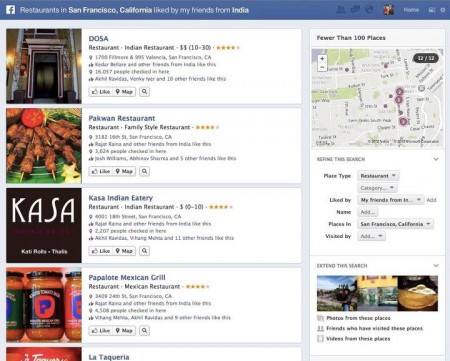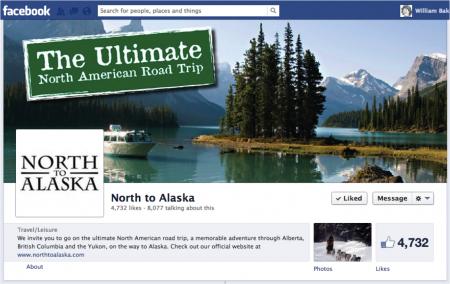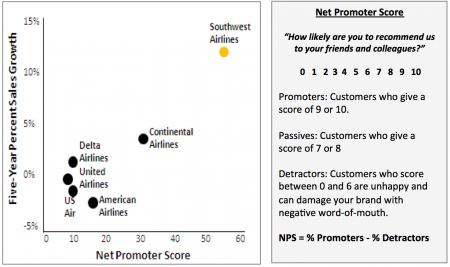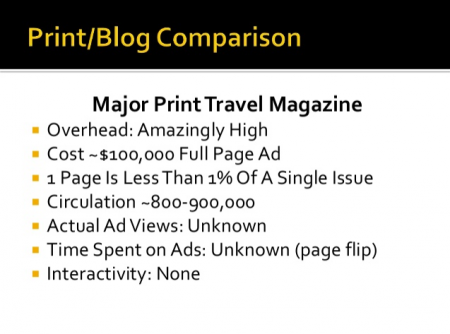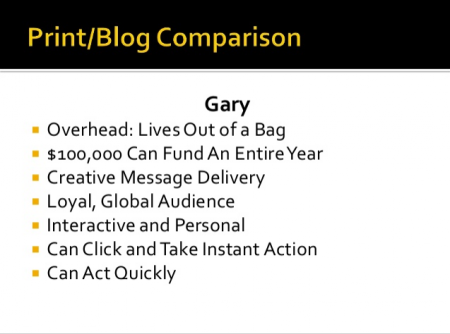January 2013
The Archives
-
Management, Marketing, social media
9 criteria for selecting travel bloggers
01.29.13 | Permalink | 11 CommentsThis post was first published as a guest post on the TBEX blog.
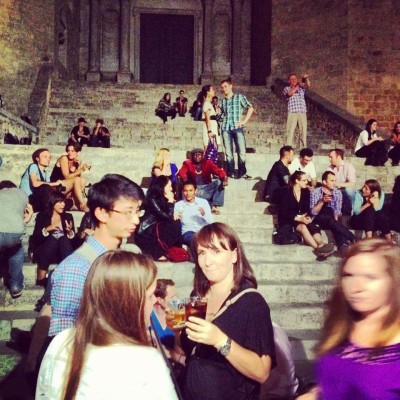
Blogger gathering at TBEX in Girona, SpainAt the moment, blog trips and bloggers hosted by a Destination Marketing Organisation (DMO) are still a bit of a novelty. DMOs don’t yet completely realize the value bloggers and bring but I expect an explosion in the near future when DMOs understand the value while travel bloggers realise the benefits a blog trip can offer and new travel bloggers want to join the club.
DMOs need a way to sort through all these requests. We’re not big fans of a one-size-fits-all approach to measure the value of bloggers but instead we like to match bloggers based on a DMO’s specific marketing goals. We also recommend that our clients take a pro-active approach to bloggers by inviting the ones with the best fit instead of a reactive one by waiting for requests to come in.
We have a good relationship with dozens of bloggers and a database with hundreds more. We have 9 criteria to select bloggers for blog trips and other campaigns, which are outlined in detail below. When developing social media strategies we recommend that our DMO clients also use these criteria to manage individual blogger requests.
1) Value to the blogger
I mention this one first, because if there’s no value for the blogger then there’s no use in working together. A blog trip or campaign needs to be a win/win situation. We’ve learned that it’s important that the DMO and blogger know each other’s expectations. Sometimes a blog trip might not work out for a variety of reasons. And that’s okay. But it’s better to set out the realities and expectations on both sides ahead of time.
2) Reach; the size of the audience
This is an important metric, but not as important as you might think – at least, not to us. We would rather work with a blogger who has a smaller audience and a higher influence. A blogger with 2,000 Twitter followers may be of more value than one with 50,000 if those 2,000 people are passionate, engaged and are likely to be influenced by the person they follow.
We use tools like Compete.com, Quantcast and Alexa to get an indication, or ask the blogger for data. We will also look at Twitter followers, Facebook likes, and other statistics. For bloggers, it’s a good idea to have this info handy as DMOs will ask for this.
3) Audience demographics
This criteria includes things like what language you blog in and what countries your readers are from, their age, education, income, etc. We’re not that interested in where the blogger comes from because their audience might come from a completely different place.
We will use Quantcast and sometimes other tools for this, although a lot of blogs don’t have enough traffic for these tools to provide valuable metrics. We sometimes ask bloggers, but we have had to make assumptions at times.
4) Influence in a niche
This one is more important to us than reach. We’re looking for people who are an authority in a subject matter. That’s the power of the Internet – there’s a community for every passion. It’s safe to assume that a wine blogger has an audience interested in wine. If we’re working with a destination that is seeking to leverage its wine products or experiences, we will pick a wine blogger with a small audience over a general travel blogger with a larger audience in most cases.
In order to determine influence, we look at things including comments on a blog (volume and types of comments) and how the blogger interacts with her/his audience. Why? It’s that personal connection that makes a blogger unique and influential. And we will also look at repeat visitation to the blog. This is an indicator of how loyal an audience is and therefore the influence the blogger has.
What we sometimes observe is that bloggers with a large audience lose the personal connection with their readers. Their blog becomes more like a traditional publication online. That’s to be expected and not necessarily a bad thing, it just changes the types of initiatives we will invite them for, and the approach we take. They may be better suited for a traditional press trip.
5) Connection to other influencers
This one is closely related to #4. Blogging is social. We believe that a blog trip or a blog campaign’s value doesn’t just come from the value as a result of the produced content, but also from the personal connections created. A blogger with a lot of connections to other influencers is more desirable as that means there’s a better chance that their messages are then amplified or retweeted by other influences. A good relationship with one blogger can also lead to a referral to another. We often ask other bloggers for suggestions about other writers.
6) Quality and style of writing, photography and/or video
This one speaks for itself. We prefer blogs with quality content. And sometimes one blogger’s style fits better with a particular destination brand than another. And it doesn’t mean that we look for moderate bloggers only, by the way. We seek honesty and transparency, otherwise a message won’t be credible. The blogger at TBEX who writes critical posts just to make PR people uncomfortable would probably not be invited, though (see #9). Often, quality trumps reach and influence.
7) Speed of communication
We don’t have a specific preference. It varies from initiative to initiative. Most of the time, a blog trip is designed to create a lot of social content right away, and speed is important. Other times, it won’t matter too much if it takes a few weeks for us to see a post (months is pushing it). The longer it takes, the more the details and energy are lost. Plus, the copy ends up looking more like it belongs in a traditional publication.
8) Use of technology and tools
Does the blogger tweet, Instagram, or post to fan pages during the trip? This is obviously helpful.
And it also varies. If we’re working on a campaign where we want a lot of content in the moment, Twitter, Facebook, and Instagram are important. In some cases, they’re not.
Sometimes we look for quality, influence, and reach for a specific tool or network. We invited a big Instagrammer to Flanders, for example. The Costa Brava even hosted an Instagram trip.
9) Personality
Is this blogger easy to work with?
We will happily sacrifice reach or influence for a nice person when we’re hosting a group of bloggers. Personality type tells us something about the bloggers’ relationship with their readers, and that’s important in social media. Other factors including professionalism and attentiveness are equally important. If it takes weeks for somebody to reply to an email, or if they don’t follow practical instructions we get worried. We often check references as well by calling another DMO the blogger has worked with.
We have good results using our criteria above. In the future we hope to build out our database so we can be a good matchmaker between bloggers and the tourism industry that delivers benefits for both.
-
Marketing, social media, Travel & Tourism
How can destinations measure the value of travel bloggers?
01.23.13 | Permalink | 4 CommentsI wrote this post as a guest post on the TBEX blog.
#blogtripF1
Destination Marketing Organisations (DMOs) have hosted influencers for a long time. It used to be the exclusive territory of travel journalists. They were courted, invited and hosted in order to generate awareness and consideration for a destination.
In order to measure this PR most DMOs used the “Advertising Value Equivalency” (AVE). You take the size of the produced piece, use the equivalent cost of running an ad of the same size in the publication, apply a multiplying factor because editorial is more credible and there’s your equivalent value of “free” advertising.
Most people in the PR industry agree that AVE is significantly flawed. But for years, it’s all we had. It was simple and easy to calculate – and at least it was consistent, something we could monitor over time, and benchmark against the competition. At least that was something.
There’s no such direct measure for blogger-based campaigns at the moment. Keith (Velvet Escape) and Melvin (Traveldudes) presented a first draft of a method calculating the value of a blog at a TBEX session in Girona. It was loosely based on AVE and an attempt to quantify the value of a post in dollars.
I applaud the attempt because at least it will provide DMOs with some guidance and offer benchmarking possibilities. But I’m not a fan of trying to use an old-media method that’s already shaky at best and applying it to a new world model in order find a social media equivalent for it. It assumes a specific blogger will provide equal value to all destinations and that’s simply not true.
There are a multitude of travel blogs out there, and with careful research, we can unearth a blog and a writer who has the best fit with a specific destination and its objectives. Often we end up bringing bloggers who have a specific skill or niche. And when we bring a group of bloggers together, the composition of that group, the mesh of personalities, matters.
It’s not just the size of a blogger’s audience that’s important, but the likelihood of delivering a relevant, credible, and authentic message to their network. Passion speaks volumes. We need to believe that their message will influence a reader’s travel decisions.
At Think! we love working with bloggers because they are, generally speaking, very passionate and excellent creators of content. We work with dozens of DMOs around the world, helping them arrange blog trips, and we involve bloggers in many of our campaigns. We tie the way we measure a campaign involving bloggers to the specific marketing objectives.
We research, identify, and approach the right bloggers for the campaign, assist with the trip planning, and provide consultancy to clients on how to make these travel (or cultural) writers feel most engaged or valued.
For example:
- In Belgium we worked with Tourism Flanders to identify, contact, and send 100 travel and music bloggers to festivals all summer long, with the objective of generating awareness for Flanders as a prominent festival destination in Europe.
- In Richmond, British Columbia, we helped find a food blogger who would eat and blog about a different Richmond restaurant every day for a year with the objective to position Richmond in the centre of the foodie community.
- In New South Wales, Australia, we organised a month-long bus trip of bloggers including a photographer and videographer with the objective of showcasing the destination and creating content in a more social way.
Through our work we know many bloggers and we hope we have developed a good reputation amongst them. Because we have these relationship it makes it easier and easier to find the right bloggers for our projects.
-
Internet, Marketing, social media, Travel & Tourism
Graph Search is something people might just love
In 2010 I wrote that Tripadvisor’s integration of Facebook connect offered a glimpse into the future. Well the future is here.
Graph Search, announced yesterday by Facebook, is a new way of searching. It’s using taking your social graph and the content shared on Facebook as the basis of relevancy. Graph Search will allow you to search for things based on your personal network of friends, your ‘friends-of-friends’ or Facebook users in general.
You can soon search on Facebook for “restaurants in San Francisco liked by people who live in San Francisco”.
Or “restaurants in San Francisco my friends like”.
Or “restaurants in San Francisco liked by my friends who live in San Francisco.”
Or “Restaurants in San Francisco liked by my friends from India”
The possibilities are endless.
The travel decision process is going to be massively influenced when Facebook users adopt this kind of functionality. Because travel product is a heavy used item on Facebook. People check in, share photos and like places they’ve been all the time.
A whole new world of discovery and travel inspiration might open up. Imagine searching for “Places people check-in who like scuba diving”
Or “Cities people check-in who like art”
Or “festivals people like who like Greenday”
Or “pictures from my friends in Berlin”
Yesterday I also read a nice post by a Techcrunch writer about a recent frustrating trip to the new MySpace. This part caught my attention and made me think.
Wait, how does Myspace know I would like these?Is everyone seeing the same ones? Did Justin pick them out for me? Are my friends listening to these guys? I have no context here. I don’t understand why they’re recommended. I decide to move on.and
I mean really, I logged in with Facebook – would it have killed you to look through my “likes” for a bit of personalization here?A Techcrunch writer is obviously ahead of the curve. But what’s happening here is that people are starting to expect websites to personalize based on their previous behaviour and what they or their friends like on Facebook.
I remember being freaked out when Amazon recommended me books based on my previous purchases. Or when a laptop bag followed me around the internet thanks to remarketing. But that’s a long time ago. I don’t get freaked out anymore. We’ve gotten used to it. We even like it. We get mad when we see ads that aren’t relevant. And Facebook’s Graph Search might just deliver exactly the functionality at the right time. And travel and tourism marketing will never be the same. You better get ready.
-
Marketing, social media
Two Facebook pages best practices
North To Alaska
First there’s the ‘North to Alaska’ page. I know this page well because it’s managed by Think!’s Dustin. And he’s killing it!
It’s the only page I know on Facebook where the ‘people talking’ almost always outnumbers the number of ‘likes’ with hardly running any ads. Besides sharing mind blowing photos, Dusty is also doing everything right to engage the community. Drawing engagement from fans, involving them in answering questions and recognizing fans for great contributions. The page has build a community of very passionate people who love the Alaska highway. The almost 5,000 fans reach tens-of-thousands because of the great community management.
<sales>
Dusty also conducts our populair social media audits. He will review your page, tell you what you do well, where you can improve and how. Just drop us a note for info.
</sales>
Applebee’s
Applebee’s? The restaurant chain? Yes, that Applebee’s.
Now the postings on the page itself is not bad, but it’s not great either.
It’s the way they handle what people post on their page. A few months ago some teenagers started ‘trolling’ the page. An ‘Applebee’s Reply Guy’ was created and has turned trolls into fans. Click on ‘See All’ where it says ‘Recent Posts by Others on Applebee’s’ and learn from how they respond to good comments, bad comments and how they use wit and humour when appropriate.
I was made aware of this page at #Somet12. Think!’s Mikala wrote a great post about it.
Update Feb 4, 2013. Apparently the Applebee’s Reply Guy lost his way (or did they change agency).
-
Management, Travel & Tourism
NPS is the perfect destination KPI
01.08.13 | Permalink | 12 CommentsA destination brand is shaped by the stories people tell each other. Consumers will share stories about their experiences. Do it right and they’ll do the marketing for you. Under deliver and they will become detractors. It’s the role of the DMO to lead the collection of stakeholders to market to the right people and deliver remarkable experiences.
Fortunately a visitor’s experience is one of the few things a DMO and it’s stakeholders have control over. And NPS, or Nett Promoter Score is the perfect way to measure and benchmark this. NPS measures customer satisfaction by answering one question – How likely is it that you would recommend [brand xyz] to a friend or colleague? On a zero to ten scale, people who score a 9 or 10 are promoters, they will recommend your destination. People who score a 7 or 8 are passive while people who score between 0 and 6 are detractors. They will tell others not to go. When you subtract the number of detractors from your promoters you end up with your Nett Promoter score.
There’s a lot of evidence that a high NPS is a strong indicator for corporate growth. Southwest is known for it’s friendly staff and business practices. It stands out from most other airlines in the US. Southwest built a customer centered culture and considers “a high NPS indicates a strong competitive advantage“. They have posted 39 years of consecutive profits and this blog posts quantifies the results of their customer service efforts.
I’ve been thinking about this for a while and have concluded that every DMO should measure NPS. Because not only is NPS a good indicator of future growth, it will also get staff and stakeholders to focus on the consumer and the customer experience.
Managing your destinations reputation is more important than ever. And it’s a collective responsibility. Use NPS to measure and benchmark it. Read The Ultimate Question to learn more about NPS.
-
social media, Travel & Tourism
The business case for blogtrips in two simple slides
At Think! we love working with bloggers because they are, generally speaking, very passionate and excellent creators of content. We work with dozens of DMOs around the world, helping them arrange blog trips and we involve bloggers in many of our campaigns.
About a month ago I attended the 2012 Digital Tourism Innovation Campus in Barcelona. Gary Arndt from Everything-Everywhere presented. Gary is one of the biggest travel bloggers out there and he’s permanently on the road. Gary laid out the business case for working with bloggers in these two simple slides.
Pretty straight forward isn’t it?
There’s more good info in his full presentation below.
-
Experience Design, Internet, Management, Marketing, social media, Travel & Tourism
3 things to think about in 2013
Happy New Year everybody! Here are three things off the top of my head that are important things to consider for 2013. Do you have any more?
1) PUT SOCIAL AT THE CORE
I think it’s pretty clear by now that social media has a major impact on the travel decision making process. If your tourism business or DMO hasn’t realized this yet you better catch up. You should be at level 3 or higher by now.
Most marketers think of social media as an add-on to a traditional campaign, or at least start with traditional thinking. It’s time to flip it around. Start with a social idea and support it with traditional methods. Or do traditional things in a social way. For example, we recently worked with a DMO who let it’s Facebook community vote on what photos would be published in it’s visitor guide.
2) START USING SERVICE DESIGN
Mitigating a mediocre experience with brilliant marketing doesn’t cut it anymore. The experience IS your marketing and the stories your visitors tell each other is what it’s all about. You have two choices. First choice is to join the race to the bottom and keep offering specials, discounts and special offers. The second one is to create remarkable experiences people love and want to be part of, regardless of what it costs.
If your choice is the latter, you need to start thinking about service design. When you’re an operator you need to start thinking about the end-to-end experience you offer your guest. When you are a DMO you need to think about the end-to-end destination experience. Service design is gaining a lot of momentum in Europe, especially in Austria where destinations are starting to take an active role in the design of the destination experience.
3) MOBILE: THINK DEVICE PLUS CONTEXT
I was on a panel at a conference in Barcelona recently and somebody asked about mobile. Before I could even think about it I said “it’s not about mobile, it’s about device + context”. I probably heard it somewhere before but I have never really thought about it like that. But it’s true. Whether you build a desktop site, a mobile site, an adaptive site or an app, it’s not the device that’s important. It’s the context of use.
When you search google maps, it takes into account your device, where you are and what date and time it is. That’s the context of your usage and the information you get back takes that into account. You need to so the same thing. A consumer accessing your content at home is looking for very different things than a consumer walking down the street in your destination.
Now here’s the kicker. Often that means people use another website than yours. Somebody walking down the street looking for a restaurant is going to use Google Maps, Yelp or Tripadvisor, not a DMO website. Even a consumer planning as trip might never even make in onto your website (hello travel bloggers). Your content online strategy needs to include content on third party websites. From inspiration to transaction. Just like we used to do it in the 90s with travel guides and tour operator brochures.

